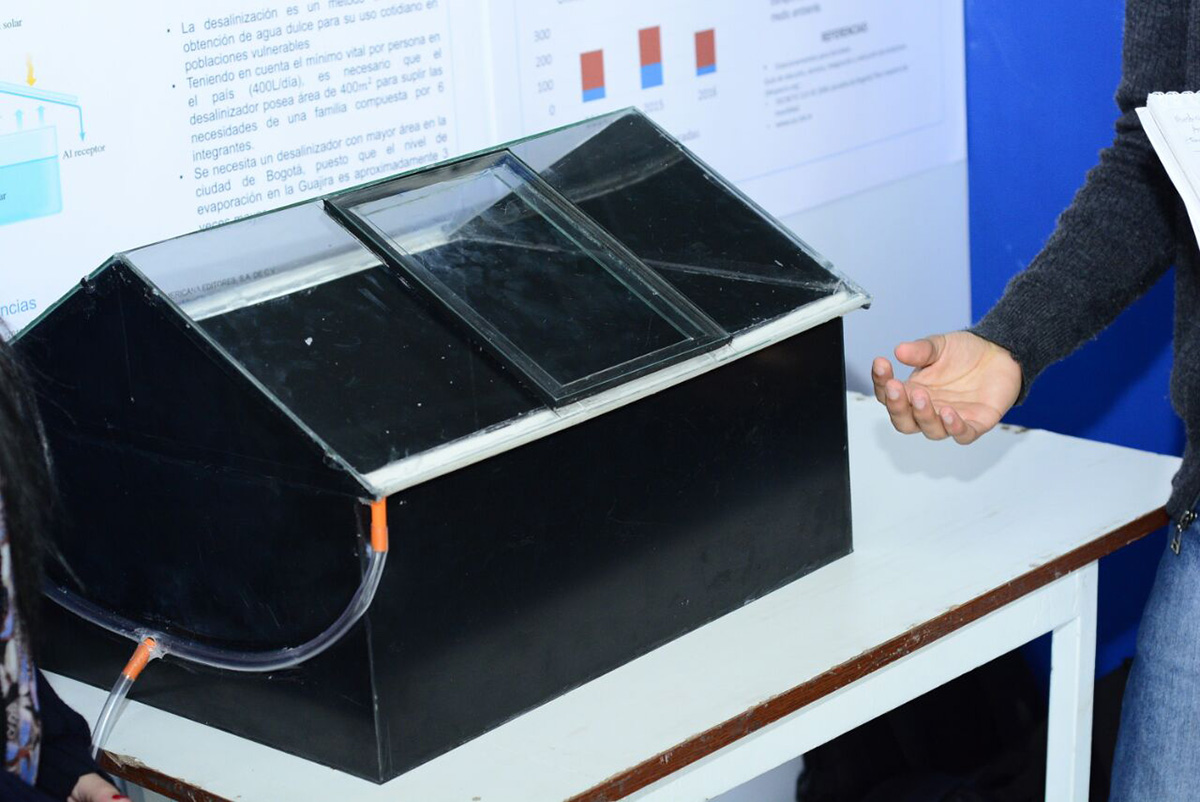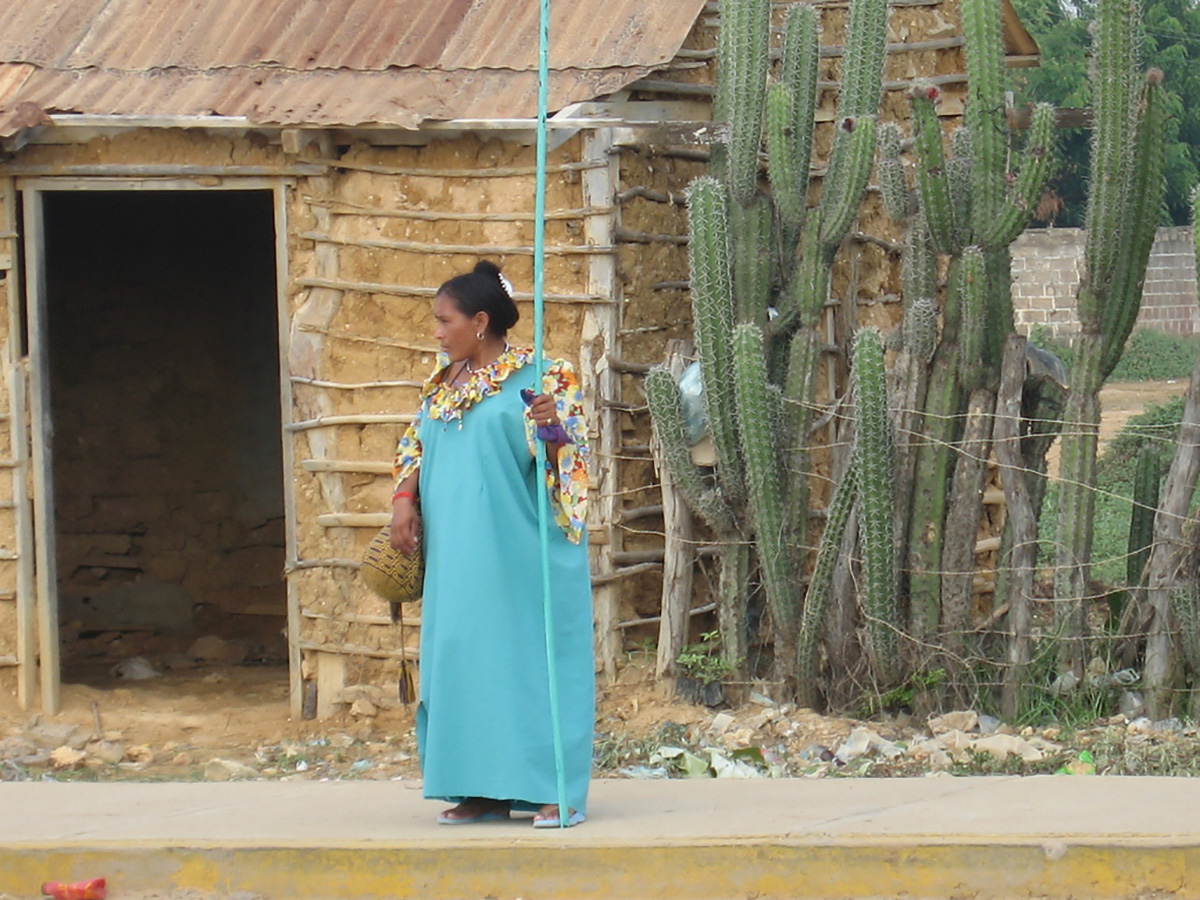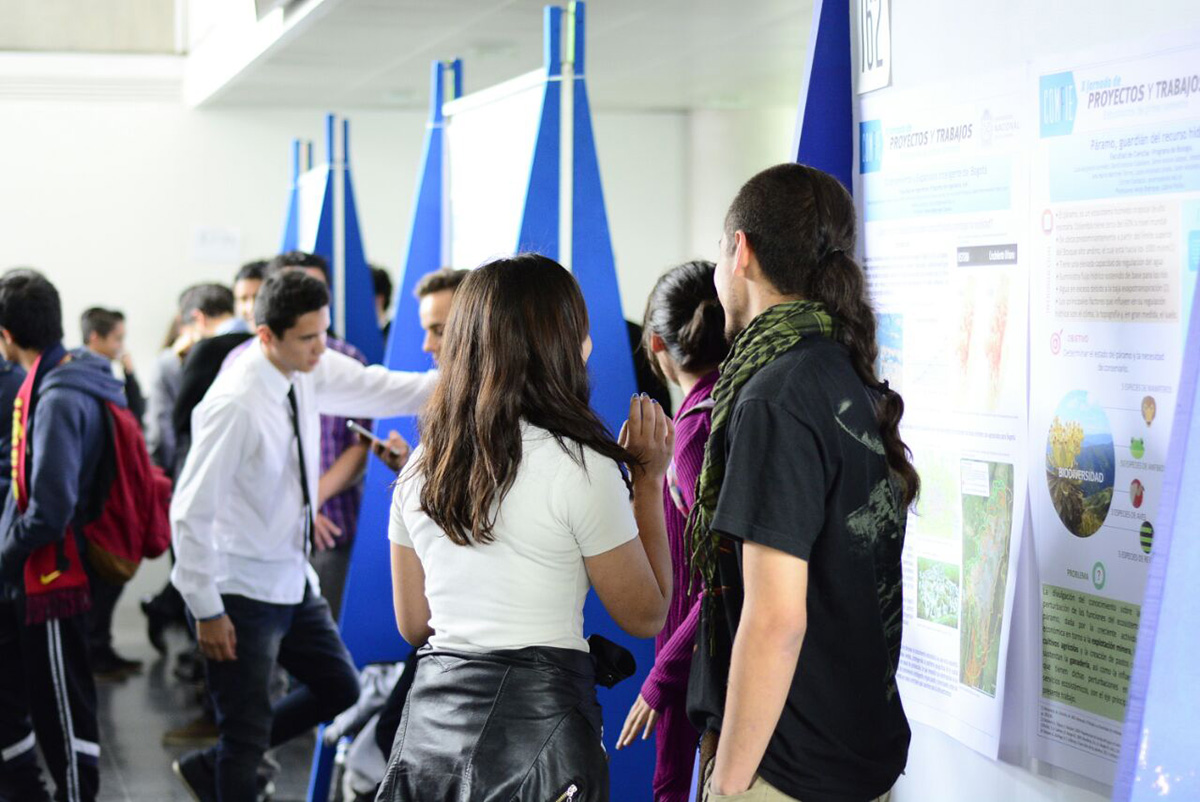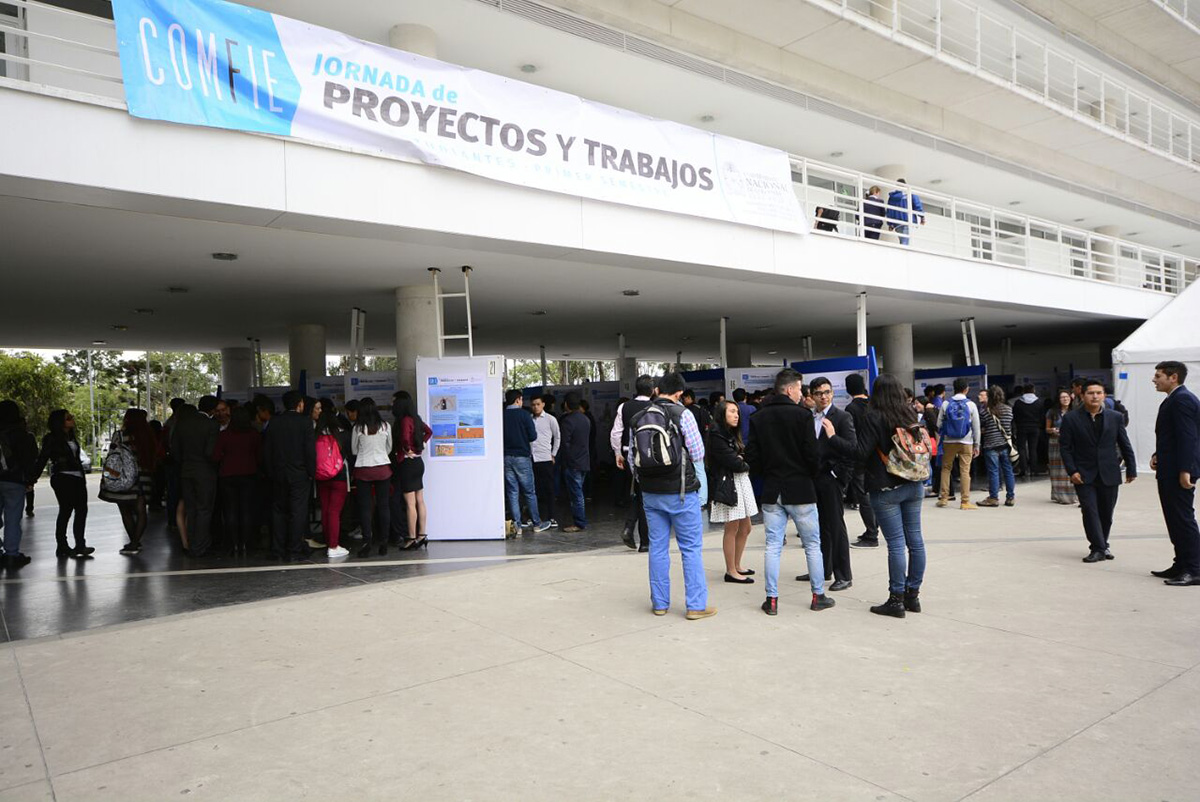The desalinator prototype has a black polyethylene base, a triangular glass top assembly, and plastic conduits.
According to UNal Agricultural Engineering student Felipe Conde, salt water is poured over the black box and then receives solar radiation causing evaporation.
"Water vapor is released to the environment due to heat convection and saturation provokes water vapor condensation. Then the water particles deprived of salt drop due to gravity," said Conde.
The black box helps to gather heat and directs it towards a conduit for storage.
The project hopes to help supply water to several Colombian provinces such as La Guajira which have very limited water sources. Also, the solar incidence is 2,190 kWh/square meters per year, favoring water evaporation and supply in less time to help supplement the water deficiency of families which lack this valuable resource.
While placed in Bogotá the system could evaporate 2.5 millimeters a day, in La Guajira it would increase to 6.5 millimeters. Therefore, desalination would take less time.
"This is the most economical and viable method for people in La Guajira to have water. The water collected in this manner has a certain degree of potability and could be used for toilets, irrigation, and other household activities. This alternative could also be implemented on house roofs," said Agricultural Engineering student Gabriela Castro.
The creators of the system estimate that considering that the minimum vital water requirement per person in Colombia is 400 liters/day it is necessary for the desalinator to have an area of at least 400 square meters to comply with the water demand of a family of six.
According to the students, besides the water usage, salt particles may be stored and later marketed.
"98% of the water in the planet is saltwater and 2% fresh water, a part is frozen in glaciers, and the rest is contaminated by the industry. Therefore it is necessary to implement alternatives that will enable using the seawater as a freshwater resource," said Conde.
The desalinator project was one of the posters showcased by this research team among more than 400 submissions of all UNal faculties which developed their initiative during their regular coursework of the semester to help solve different kinds of issues.
To help transition between high school and college freshman year, UNal implemented a method they call Comfie (faculty communication) which consists of helping freshmen to become acquainted with their chosen careers from the first day of class.
Nora Acuña, Comfie Coordinator says this program encourages the development of competencies in the main course of the semester.
 Correo Electrónico
Correo Electrónico
 DNINFOA - SIA
DNINFOA - SIA
 Bibliotecas
Bibliotecas
 Convocatorias
Convocatorias
 Identidad UNAL
Identidad UNAL







